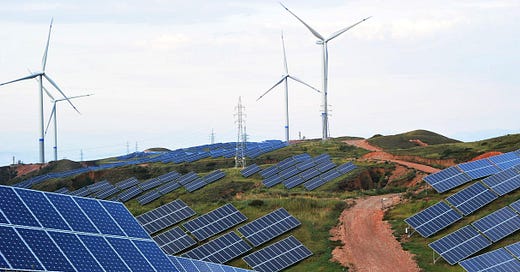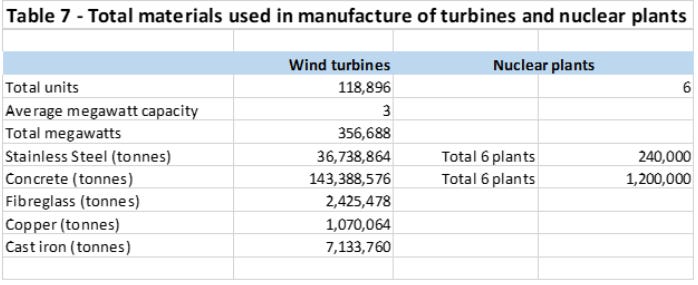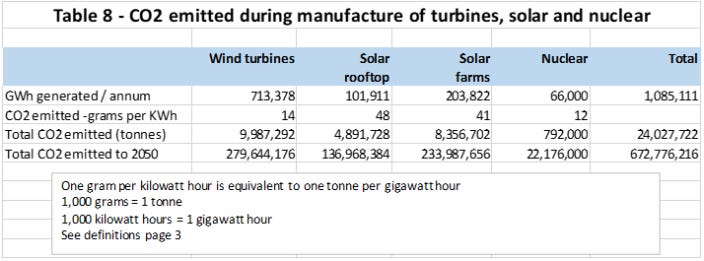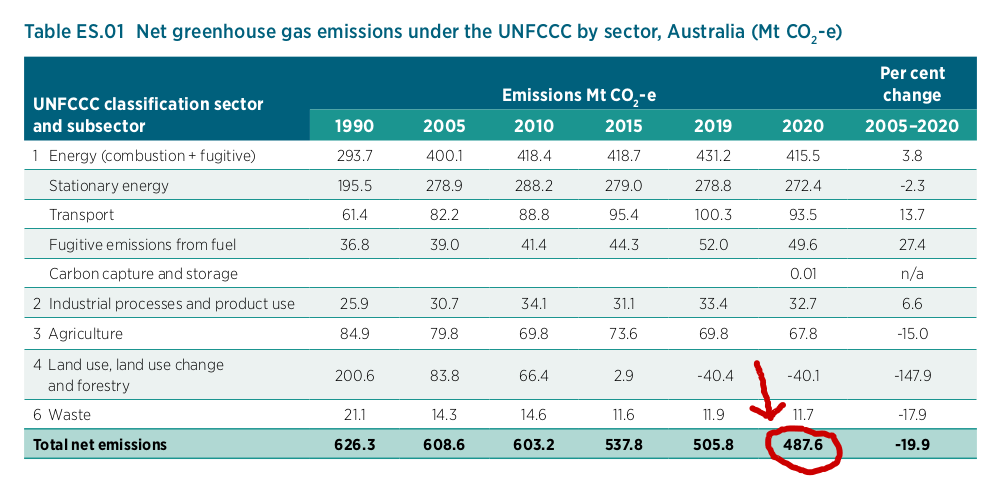"Clean Energy Transition" Part 1
Reassessing the feasibility for Australia alone to transition to Net Zero energy sources by 2050.

Renewable, or ‘clean’, energy is all the rage nowadays. Dirty coal, greasy oil and smelly gas have got to go, or so we are told ad infinitum by goverments, mainstream media and ‘climate action now’ NGOs. These three fuels which represent the energy backbone of the modern, industrialised world are now wicked words. They are the “fossil fuels” of a fossilised generation that polluted freely and without hindrance: billowing smokestacks belching blackness across cities for centuries; roaring industry drinking down oil and gas in the insatiable thirst for more and more production; the hubris of cigar-chugging capitalists grinning eagerly at record sales, record profits and record technological advancement.
Let us enter this world for a moment assuming, as the proponents of this story do, that there is indeed a man-made climate crisis and that CO2-producing humans are solely to blame for our present perilous course to apocalyptic perdition where nature itself hurls more bushfires, more floods, more droughts, more hail, thunder and lightning, more earthquakes, more tsunamis, more volcanoes and more asteroids at us than at any time in written or oral history (the latter these types especially love to ignore), because MAN-MADE CLIMATE CHANGE. Let us pretend it is true, no questions asked, and discern what, exactly, needs to be done to transform the modern world away from filthy energies of coal, oil and gas to clean, renewable, non-CO2 polluting alternatives like solar, wind, hydro, and nuclear.
Governments, such as my own NSW State government and the current Labor government in Canberra, have repeatedly expressed a desire to transition Australia away from coal, oil and gas by 2050, or at least to reach “Net Zero” CO2 emissions by then, implying the use of so-called carbon offsets for industry and enterprise which it is impractical to convert to ‘clean’, such as heavy machinery used in mining.
Various able individuals have thought long and hard about what needs to be done logistically to transform national and global energy chains to ‘clean’ forms. This four part series begins with one otherwise difficult-to-find analysis by Kenneth Schultz (2021), “Logistics and Costs for Australia to Achieve Net Zero CO2 Emissions by 2050.”
In this report, Schultz crunches some important numbers which pertain to Australia’s specific industrial context: what needs to be done, practically, empirically and logistically, to transfer our energy needs from ‘dirty’ to ‘clean.’
First, one needs an estimate energy benchmark: how much energy is used in Australia on an annual basis? This turns out to be 1.7 million gigawatt hours, supplied by the government’s own reports.1
Second, what proportion of that energy is currently supplied by ‘dirty’ and ‘clean’ energies respectively? The proportion is stark: 1.6 million gigawatt hours currently come from ‘dirty’ energy (93.6%), and 0.1 million gigawatt hours come from ‘clean’ energy.
Thirdly, what kind of clean infrastructure needs to be built to decommission ‘dirty’ energy in a reliable manner, and how much is needed to replace coal, oil and gas? Keep reading.
Fourthly, how much CO2 would be produced in the manufacture, transportation and construction of the new ‘clean’ infrastructure? You have to use energy to build new power infrastructure!
Finally, how many new ‘clean’ installations need to be built per annum given the 27 year time frame (2050), and is that task logistically plausible?
I supply Schultz’s answers with this pithy quotation included in the abstract of his article. To go ‘Net Zero’ by 2050, Australia must (emphasis added):
Decommission an amount of fossil fuel-burning generators, vehicles and equipment that collectively consume 1,085,000 gigawatt hours of fossil fuel annually and replace with zero emission equipment.
Install 119,000 wind turbines over an area of 60,000 square kilometres, an area as large as the area of 3 million MCG stadiums. Construction and installation of the turbines will consume 36 million tonnes of steel and 145 million tonnes of concrete.
Install 6 million rooftop solar systems.
Build 2[4],000 solar farms.
For the 516,000 gigawatt-hours of fossil fuel-burning equipment that cannot be replaced, provide carbon offsets by planting 17 billion trees per annum for a total cost of $238 billion and a total land requirement of 201 million hectares, an area equivalent to 50 per cent of Australia’s total agricultural and grazing land.
Build 6 nuclear power stations at a cost of $92 billion
Emit 670 million tonnes of carbon dioxide during the manufacture and construction of the infrastructure
Spend an estimated total of $1.13 trillion
Included in that jaw-dropping assessment were the calculations for the rate of deployment of that infrastructure by 2050. That’s right, a logistically impossible 354 wind turbines, 17,842 rooftop solar arrays, 72 solar farms every month from January 2022 until December 2050, and 6 nuclear power stations crammed in there somewhere.
The material costs of that infrastructure are equally boggling (and he forgot the silicon for the solar panels and rare earth metals for batteries and electronic circuitry):
And last of all, the CO2 production of that infrastructure:
So if you produce CO2 to reduce CO2 from CO2 producers, does it stop CO2 production?
Not calculated above is how much CO2 would have been produced if we simply omitted this logistical Net Zero nightmare and kept on burning coal, oil and gas at 2020 rates. I had to go digging for that data, but I found it. According to Australia’s 2020 National Inventory Report, Volume 1, p. xiv,2 our annual CO2 emissions in 2020 were 487.6 million tonnes, of which combustion energy was 415.5 million tonnes:
So yes, in fact, it would. In terms of CO2 output, emitting 670 million tonnes of CO2 over 28 years to manufacture 120,000 wind turbines, 6 million solar panels, 24 thousand solar farms and 6 nuclear reactors will indeed prevent a significant amount of CO2 emissions, somewhere in the figure of 10 billion tonnes, assuming CO2 emissions are even an issue for a country that contributes an estimated 1.5% of the global human output thereof.
But is it worth the $1.13 trillion cost, added to our existing $1 trillion of unnecessary COVID national debt? Is it worth the delusion of planting 50% of Australia’s arable land with carbon-offset forests, 17 billion trees per year, in fact? It is worth the ludicrous logistical impossibility of installing 120,000 wind turbines across the land, which would have the side effect of devastating our national bird life? And since nuclear must be an option, for it is the only realistic Net Zero supply of reliable base load, where will the spent nuclear fuel go? And all the while we’re exporting 300 million tonnes of coal to China annually to keep their furnaces roaring towards our 2050 self-demise.
In Part 2 we shall discover that logistics is not the only nightmare facing those who want to plunge us into a Net Zero future. In the mean time, feel free to invite proponents of the Net Zero clean energy transition to explain, logistically, in detail, how and where they intend to build 120,000 wind turbines, 6 million solar panels, 24,000 solar farms, 6 nuclear reactors and plant 17 billion trees per year from now till 2050, and kick 50% of our farmers off their land to do it, to reach this truly insane dream of Net Zero. And this is only for Australia!










Thank you JP. My take: it (the truth of it) doesn't really matter because it is not about any actual or real real "transitioning". It is about moving the money around, it is about directing people's attention away from other issues, it is about silly retail politics and global political manipulation.
Yep, I’m sure you are an avid listening of the Power Hungry podcast too. They had a recent Australian guest, ex mining engineer, works for some Finnish mob, that basically asked “where the fck are these metals and ores going to come from”. And no one seems to give a fck about the kids mining cobalt in the Congo. Isn’t there a modern slavery prohibition? Like Uigher’s involved in the manufacture of Poly silicon in China ? Conveniently brushed aside on the alter of net zero. Apologies for the rant. Good article. As for me, I think I need to head further north before the blackouts in NSW start.